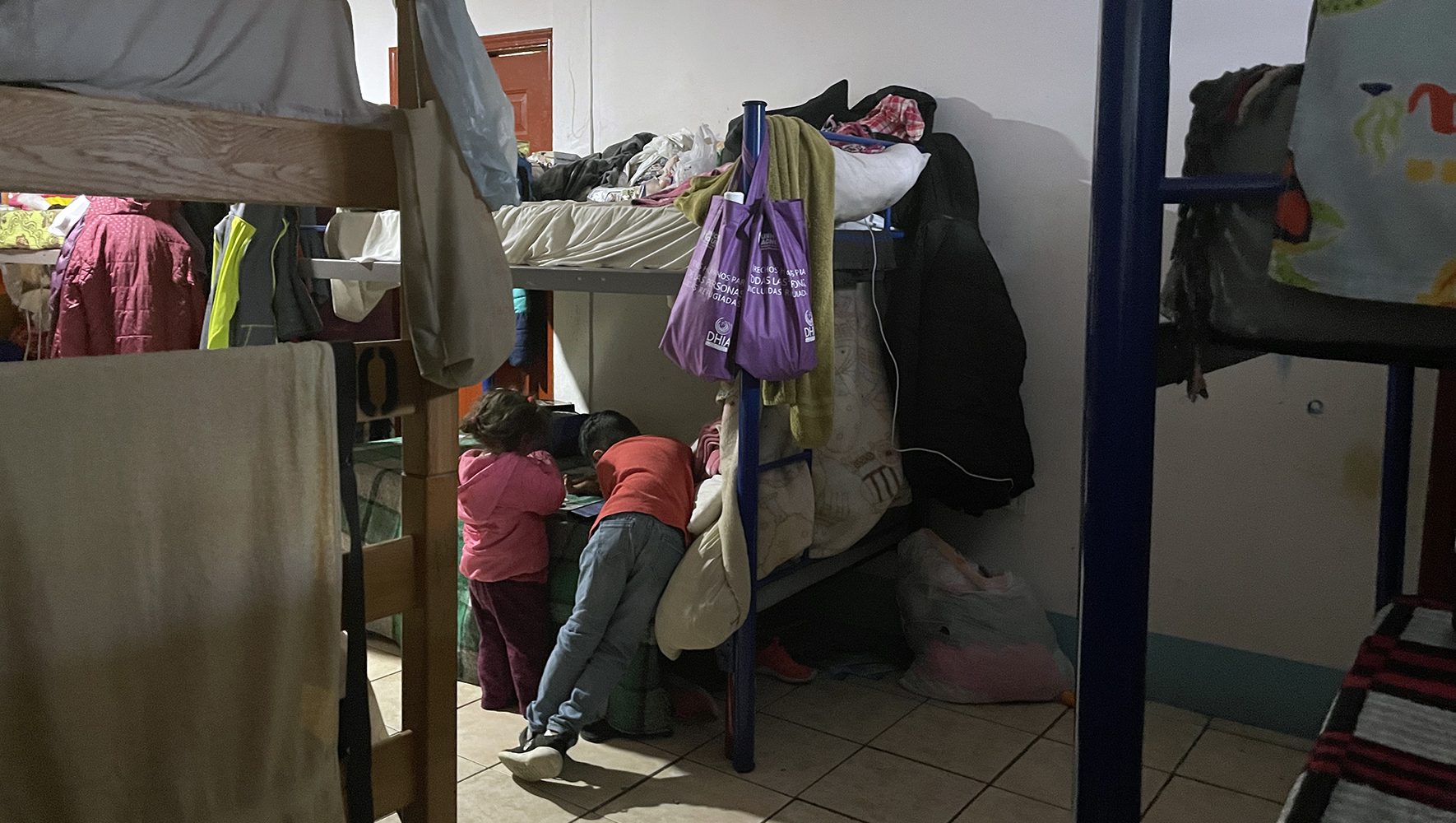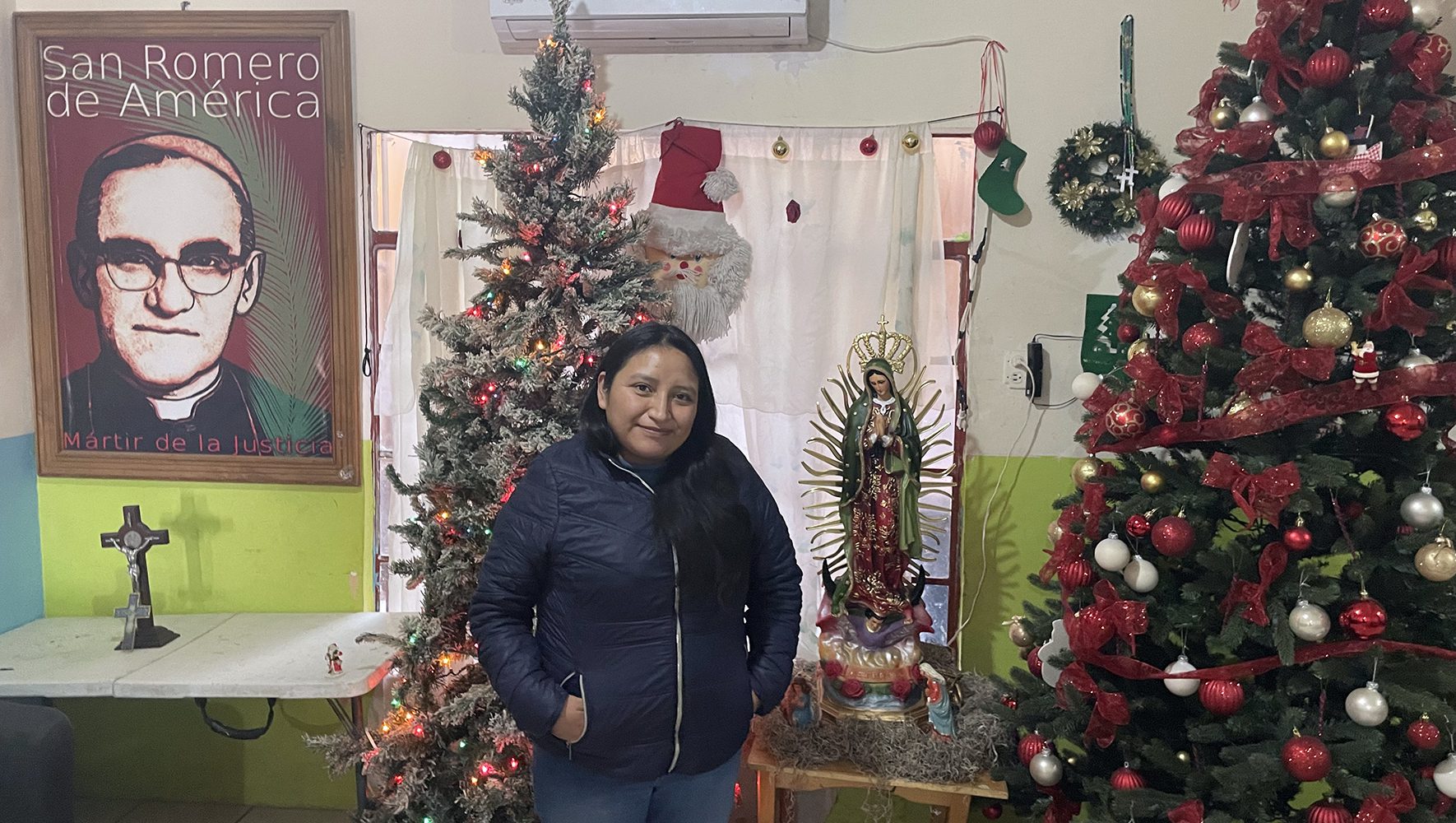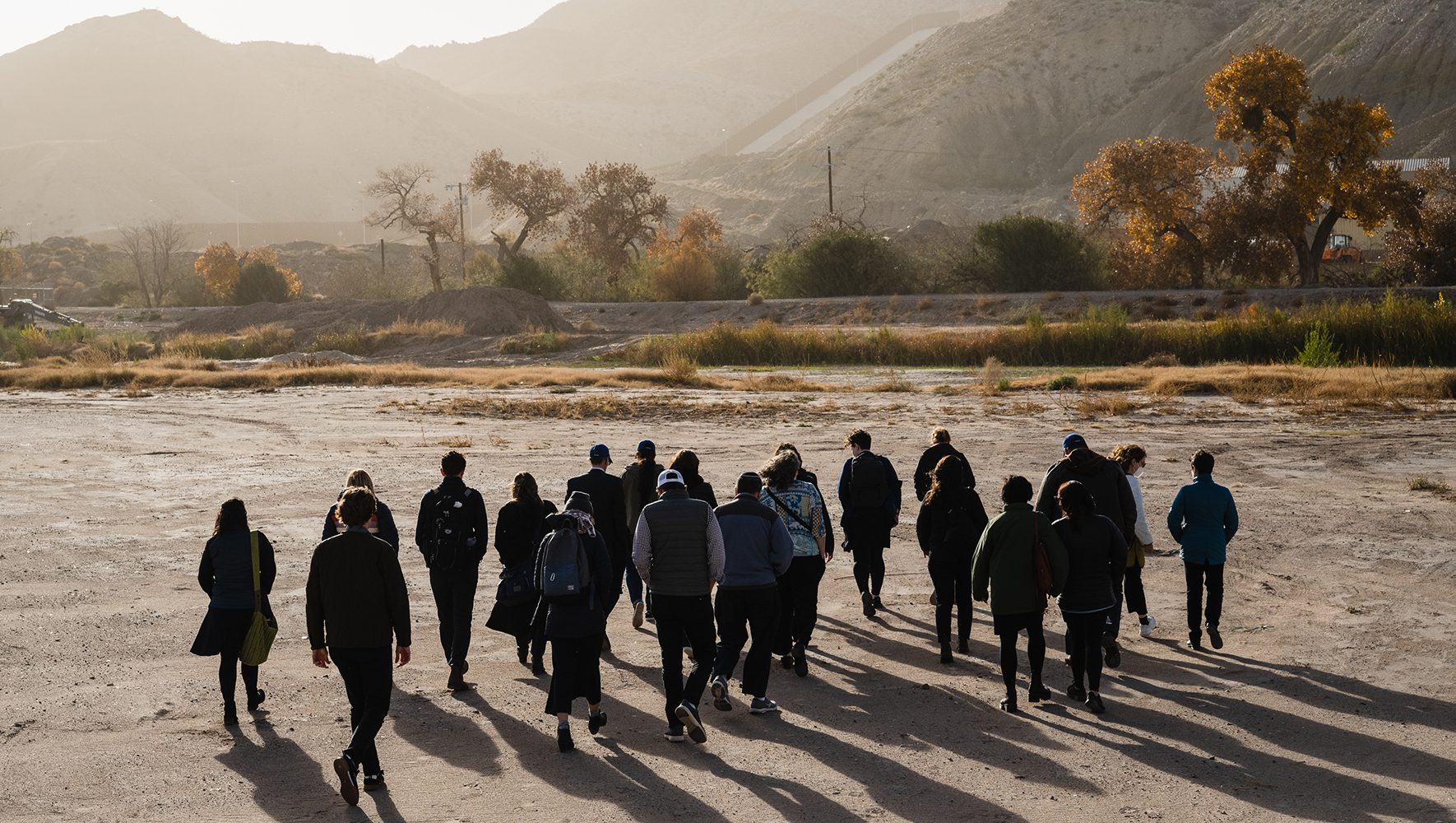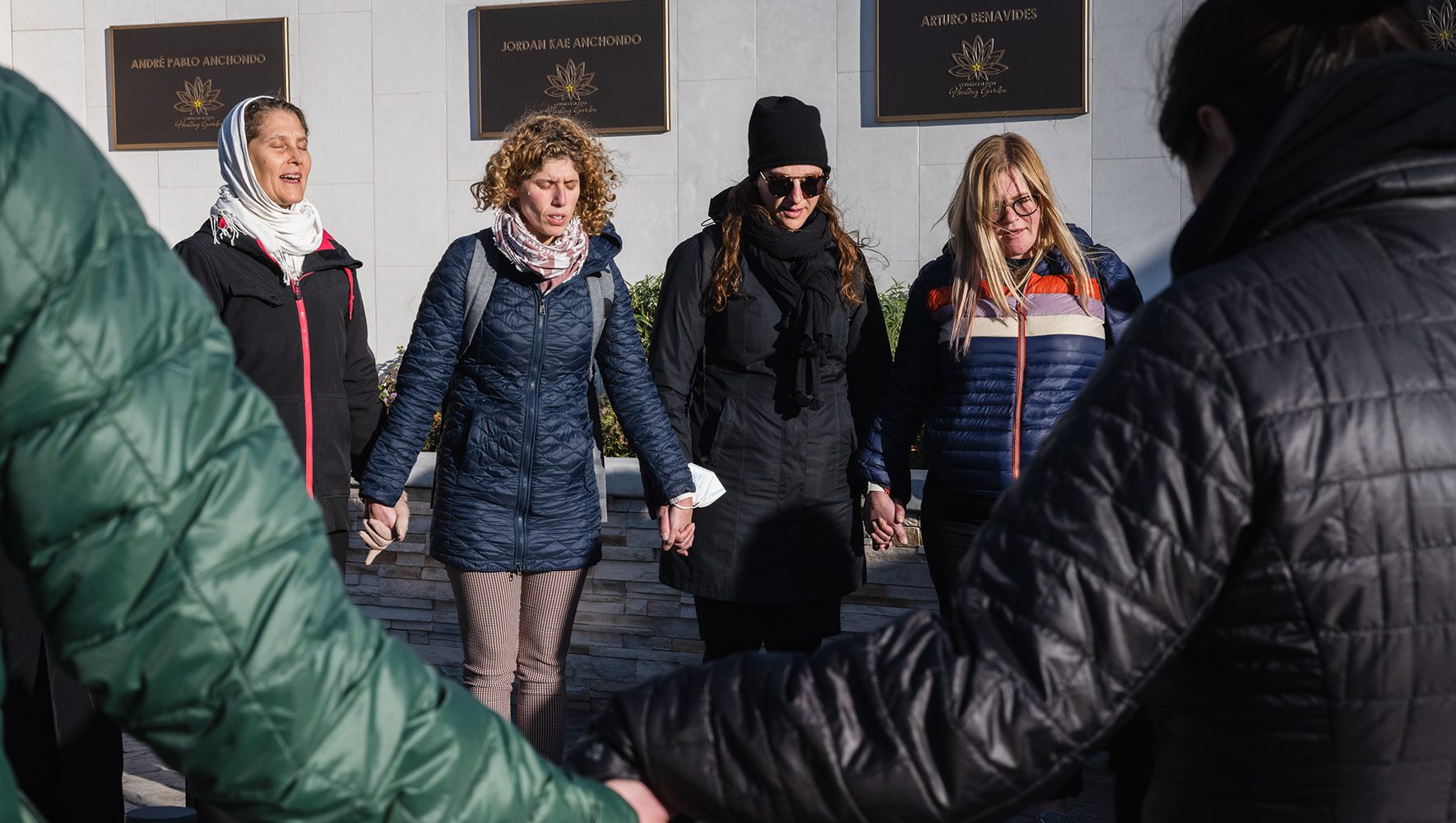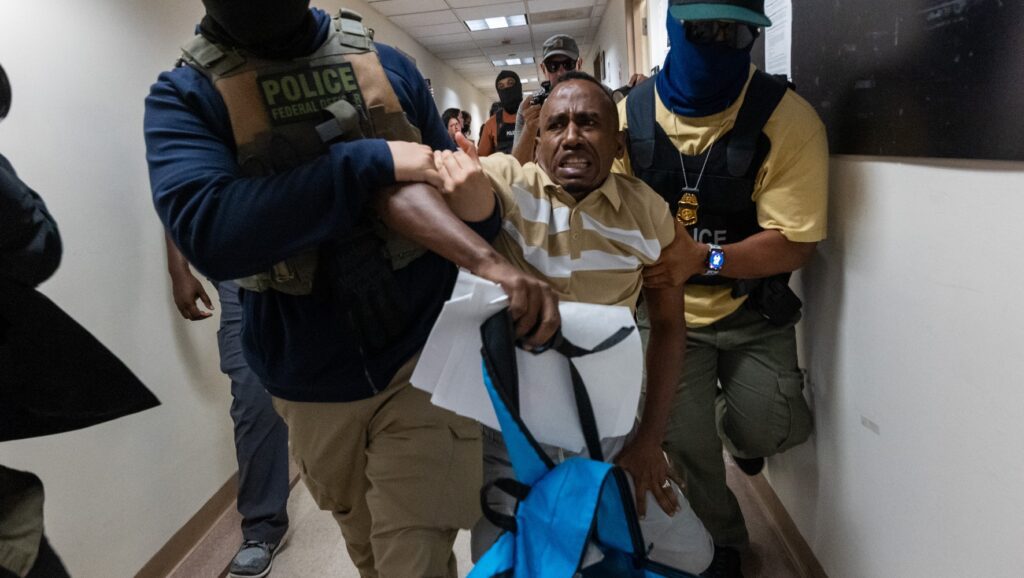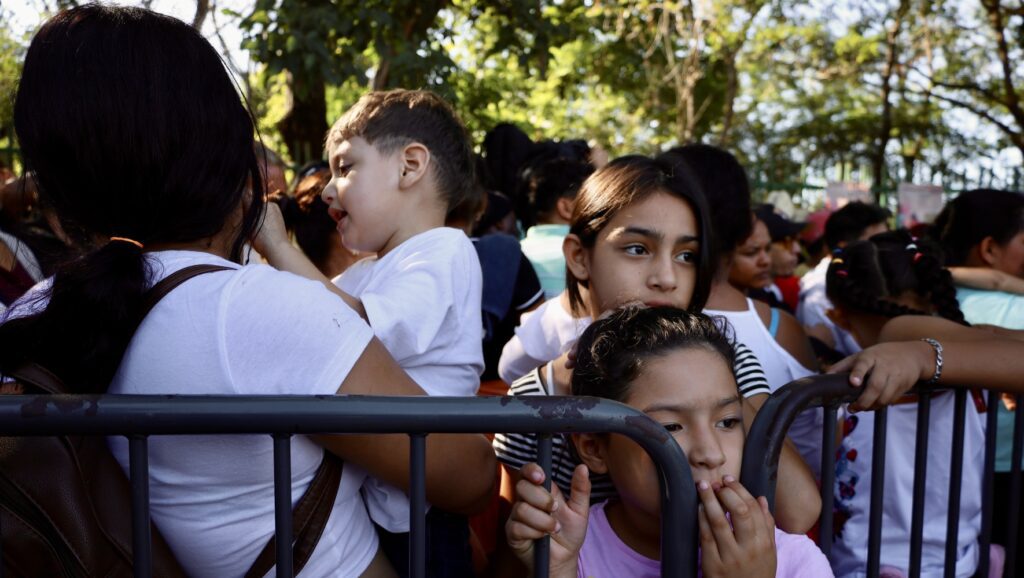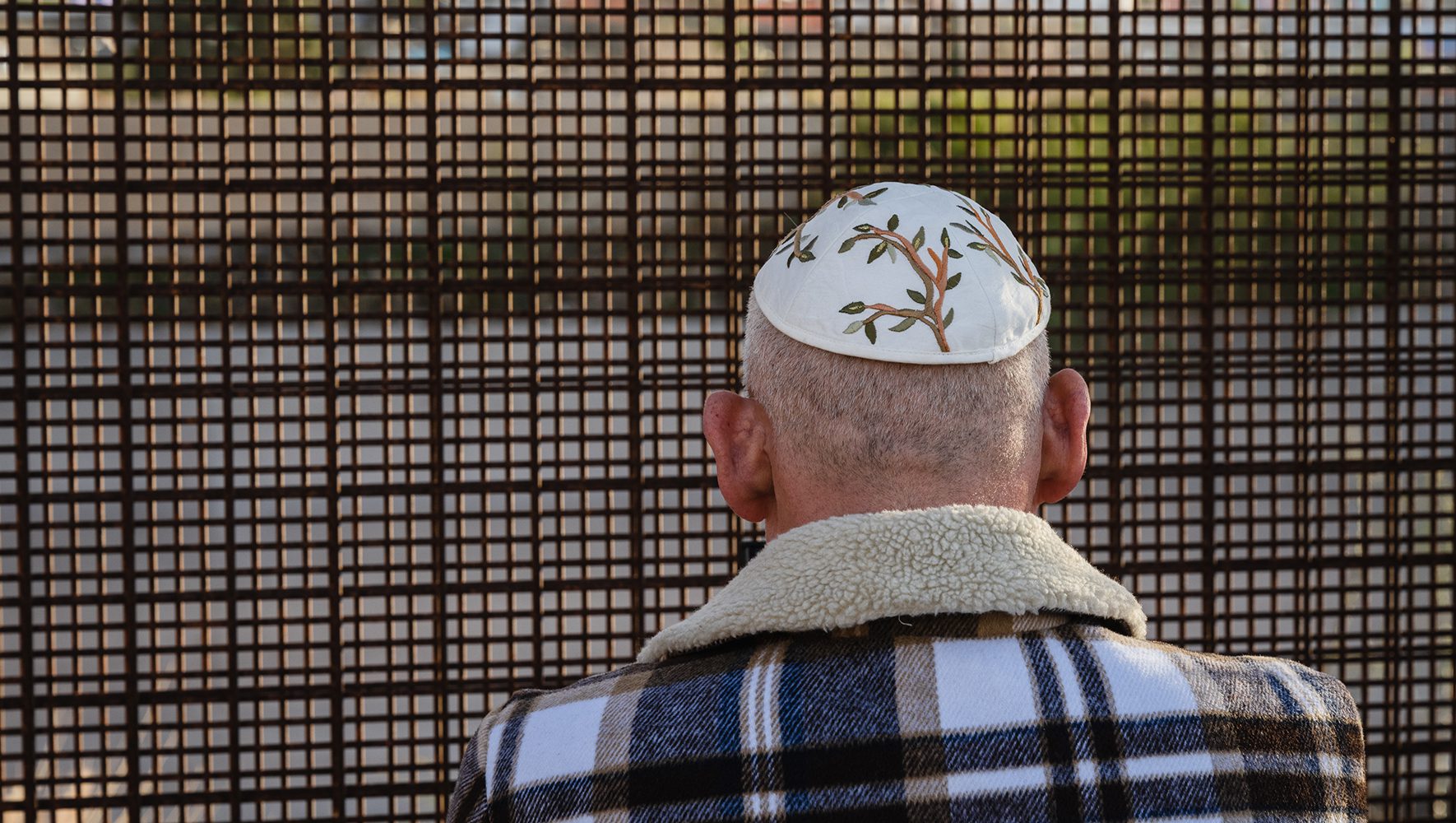
On a Monday morning in mid-December, Casa San Romero, a Catholic-run migrant shelter in Ciudad Juárez, Mexico, buzzes with activity. Adults prepare lunch in a kitchen stacked high with canned goods, while children upstairs play with a cell phone in a room filled with bunk beds. Teenage girls, giggling and shouting, burst through the shelter’s entry room, followed by a stream of children who had earlier crowded around a TV – now they’re running to catch the school bus.
Sonia Meza Ramirez, a 28-year-old social worker, coordinates many of the day-to-day activities of Casa San Romero, which works closely with HIAS Mexico. The work isn’t always easy. Aid provided by organizations and individual volunteers is often temporary, leaving little money for maintenance. On this Monday morning, when a group of rabbis stopped by, the shelter’s dryer had broken, so laundry hung on banisters and lines strung through hallways. And in a home where 14 families share three bedrooms, privacy can be in short supply.
But in spite of these challenges, life at the shelter goes on. Adults look for and find work. Children play and go to school. In contrast to a persistent narrative in parts of the American media — that the human beings seeking refuge in the United States represent a security threat — Casa San Romero was striking for, above all else, its ordinary humanity.
Casa San Romero was just one stop on a delegation of rabbis to the U.S.-Mexico border, led jointly by HIAS and T’ruah, a human rights organization representing over 2,300 rabbis and cantors and their communities in North America. The itinerary also included visits to a HIAS Mexico office in Ciudad Juárez, shelters in El Paso for migrants and unaccompanied minors, an immigration court, and an ICE detention center. Participants also met representatives of local organizations, such as Las Americas Immigrant Advocacy Center and Hope Border Institute, and Pastor Michael Grady, the father of a survivor of the 2019 El Paso Walmart shooting. The 15 rabbis who joined the delegation represented nine states and five different denominations of Judaism: Conservative, Orthodox, Reconstructionist, Reform, and Renewal.
In a moment when asylum seekers and other migrants are frequently framed as threats, HIAS and T’ruah sought to bring rabbis to the border to speak to the moral imperative at the heart of this issue: recognizing the humanity of those seeking safety in the United States.
“We wanted the rabbis to take what we learned from the trip and turn it into advocacy and action on behalf of displaced people,” said Rebecca Kirzner, senior director of grassroots advocacy and organizing at HIAS and an organizer of the delegation.
The visit to El Paso and Ciudad Juárez occurred just one week before Title 42, a public health law revived in March 2020 that has essentially blocked people from seeking asylum at the U.S.-Mexico border, was set to end. Last month, U.S. District Judge Emmet Sullivan ruled that the law — enforced, ostensibly, to prevent the spread of COVID-19 — was “arbitrary and capricious” and must come to an end. On December 19, the Supreme Court granted a stay of Judge Sullivan’s ruling, leaving Title 42 in place for now pending further review.
The delegation also coincided with an unusual amount of activity on the border: On the evening of December 11, 1,500 people arrived in El Paso after crossing the Rio Grande from Mexico, triggering renewed coverage in the American media.
“When news agencies report on increased crossings, they use language that dehumanizes and stigmatizes asylum seekers and other migrants as ‘a surge’ or ‘a flood,’” said Kirzner. “In reality, the people crossing the border are making an impossible choice: to risk their lives in order to save their lives. They wouldn’t be putting themselves in danger if they had other options, but because of Title 42, they do not.”
"People crossing the border are making an impossible choice: to risk their lives in order to save their lives."Rebecca Kirzner, senior director of grassroots advocacy and organizing at HIAS
Those seeking safety in the United States face a long list of obstacles. According to Rocio Melendez Dominguez, managing attorney for HIAS Mexico, Customs and Border Patrol agents routinely throw away the belongings of migrants they expel under Title 42. “It’s very traumatic [for the migrants],” she said. “They arrive with nothing — only the clothes they’re wearing. And when they wear uniforms they receive in detention, that puts them more at risk because criminals can identify people who are not from the city.”
At the Otero County Processing Center, an Immigration and Customs Enforcement (ICE) detention facility in Chaparral, New Mexico, day-to-day operations are run by MTC, a private company with the slogan, “Believe It Or Not, I Care.” MTC told the delegation that detainees who work in the laundry or the kitchen make $1.50 to $2 a day, which is considered a “good amount”: ICE only requires detainees to be paid one dollar per day for their work.
“Despite the staff demonstrating their best practices, I could not shake the haunted look in the detainees’ eyes when we encountered them in their rooms,” said Rabbi Joshua Lesser, Rabbi Emeritus of Congregation Bet Haverim in Atlanta, Georgia. “No matter how much free time they were given, or the quality of the menu, Otero felt like a prison. Knowing about MTC’s documented history of abuse and neglect made me question what we were being shown and more determined to advocate for the end of detention as the primary way to address asylum seekers, refugees, and undocumented people.”
For members of the delegation, the visit to the border provided a visceral experience they could not have obtained from reading or watching the news. This can be a powerful driver for change, said Rabbi Miriam Terlinchamp of Temple Sholom in Cincinnati, Ohio, who watched a family cross the Rio Grande on a morning where temperatures hovered around 40ºF.
“I needed to see for myself those children being carried across the water,” she said. “I think there are some of us – and I am one – who need our hearts cracked open so that our empathy can be transformed into action.”
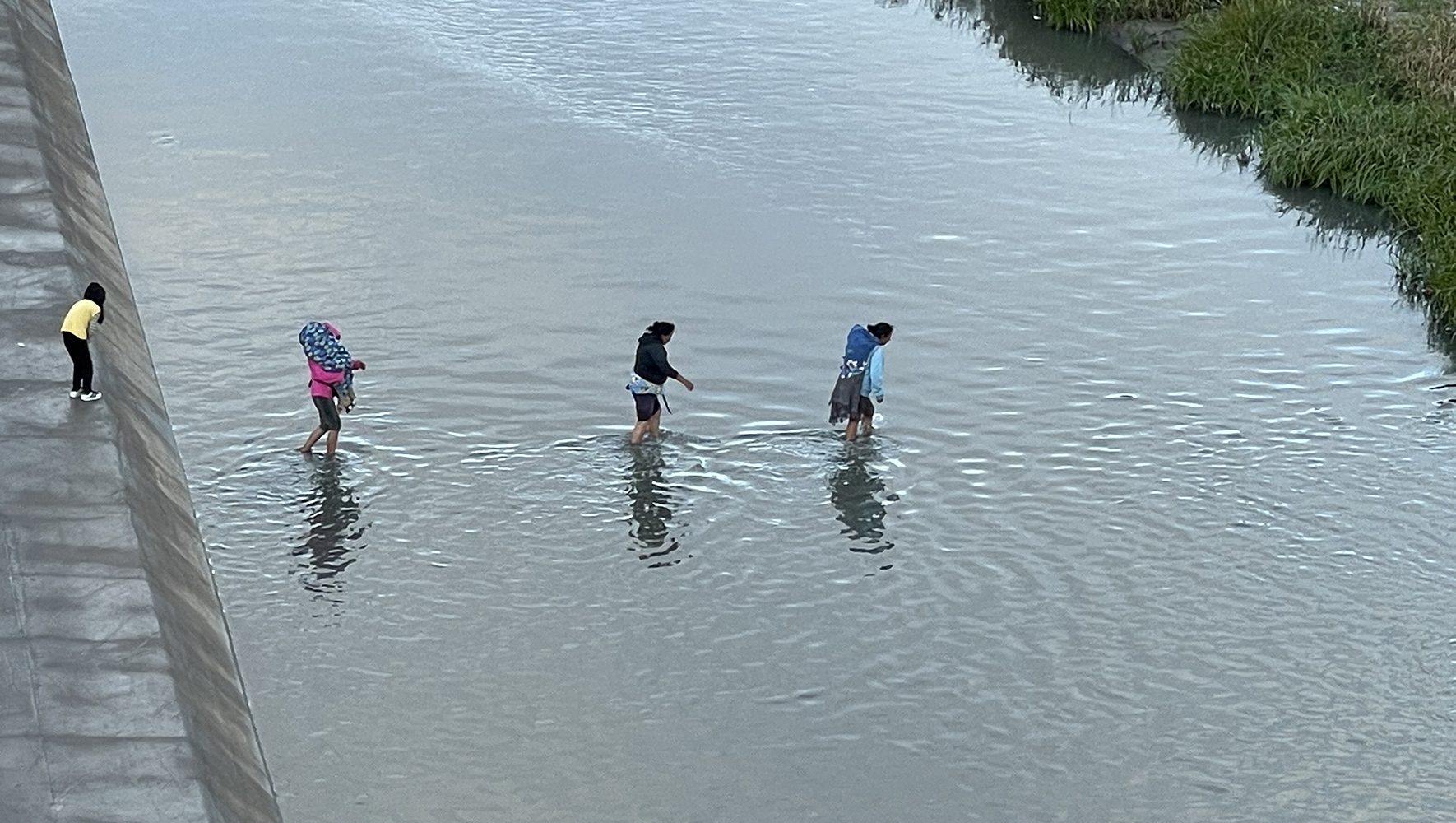
A group of people crosses the Rio Grande from Ciudad Juárez into El Paso on December 13, 2022. (Rabbi Miriam Terlinchamp)
The border delegation also witnessed communities and organizations on both sides of the border who are willing and able to help those looking for safety in the U.S. The organizations the group encountered were all associated with faith groups, and, like the rabbis themselves, viewed helping asylum seekers as a moral imperative.
The group visited Annunciation House, a migrant shelter in El Paso rooted in Catholic social teaching, as they prepared to welcome the increased number of people needing a place to stay after crossing into the U.S. Normally, Annunciation House limits occupancy to 40 to 60 residents. But on this night, they set up beds in an unused chapel and other makeshift spaces to squeeze 80 people in for the night.
The delegation did more than just provide rabbis with a memorable experience. It also spurred them into action. Rabbi Jennifer Schlosberg of Glen Rock Jewish Center in Glen Rock, New Jersey, organized a spontaneous donation drive to support the increased number of asylum seekers staying at Annunciation House. Using the $4,000 they collected, she and three other delegation members made their way to the same Walmart where a gunman, motivated by anti-migrant and anti-Latino sentiment, killed 23 people in 2019. There, they purchased warm clothing, food, and other much-needed items and delivered them to the shelter, where they were greeted with joy from guests and volunteers alike.
“I woke up to the news of hundreds of migrants on the streets on a day when the temperature had dipped to freezing,” recounts Schlosberg. “I knew I needed to do something. The Talmud teaches us, in Sotah 14a, that just as God clothes the naked, so too do we. And shopping at this store, where 23 people were fatally shot, was also our own sort of tikkun (healing).”

Rabbi Preston Neimeiser looks on during a tour of Annunciation House, a migrant shelter in El Paso, Texas on a border delegation by HIAS and T’ruah on December 13, 2022. (Justin Hamel for HIAS)
The future of the U.S. asylum system remains uncertain. Legal and legislative challenges to the end of Title 42 continue, and possibilities of further asylum restrictions are up in the air.
Yet the lessons learned on this trip have already found purchase. Many of the participants have been speaking out about what they have learned, whether drafting op-eds for their local papers, speaking with reporters, or weaving the story of the delegation into their sermons on the weekly torah portion.
For one participant in particular, these learnings have already hit close to home. Rabbi Rachel Weiss of the Jewish Reconstructionist Congregation in Evanston, Illinois said that relatives of a family in her congregation were currently making the journey to seek asylum in the U.S.
“Thanks to our trip, I’m so much more equipped to support my congregants in their expectations,” she wrote in a group chat with participants and staff from the visit. “We are lining up support, legal and practical, for when they arrive. If only everyone had a congregation behind them. Our members are awakening to who else might need help once they arrive in Chicago. Person by person, right?”
